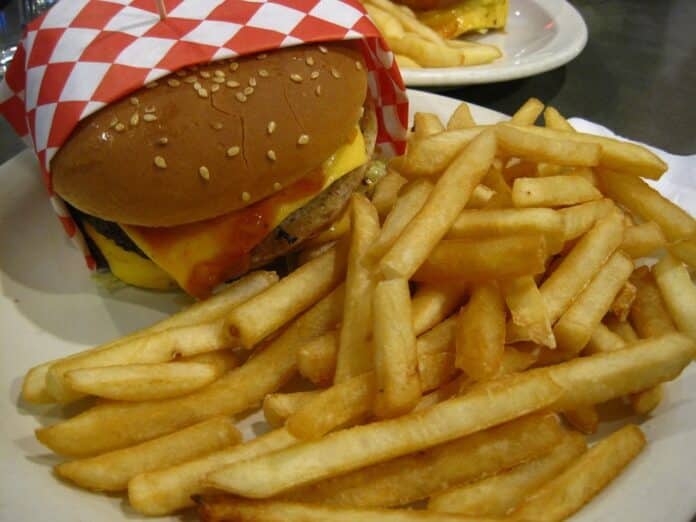In the U.S., poor eating is a major contributor to death and morbidity. A poor diet significantly increases the risk of developing cancer, cardiometabolic illnesses, and weight gain.
Junk food taxes can increase the product’s cost, lowering consumption and using the money raised to support underdeveloped areas. Taxing junk food is administratively and legally possible. However, the term “junk food” is not yet defined.
A new study examines how the United States has defined junk food for taxation and other regulations over the past three decades.
What does “junk food” mean regarding food regulations like taxes? Researchers from the Friedman School of Nutrition Science and Policy at Tufts University and the NYU School of Global Public Health have recently analyzed thirty years’ worth of American food policies, finding that which foods should be subject to health-related regulations depends on a combination of food category, processing, and nutrients.
Junk food, which accounts for 15% of all calories consumed in the United States, is often used to characterize sugary or salty snacks and desserts with low nutritional value.
Jennifer Pomeranz, assistant professor of public health policy and management at NYU School of Global Public Health and the first author of the study, said, “There is a growing recognition that an unhealthy diet stems from overconsumption of what we colloquially refer to as ‘junk food,'” However, public health efforts to address junk food are hindered by a lack of a uniform method to define junk food for policy purposes.”
A junk food tax is one example of a policy requiring a definition of junk food. This policy increases the price of such products to lower consumption and raise money for other programs that help underserved people with their nutrition and health.
According to prior research from NYU and Tufts, Taxing junk food is administratively and legally possible.
Although they are not frequently used in the United States, junk food taxes have been successfully implemented in a number of other nations.
Hungary taxes unhealthy food that falls into particular categories and contains high quantities of nutrients, such as sugar and salt, which has resulted in lower consumption of junk food, increased nutrition awareness, and forced manufacturers to reformulate their goods to make them healthier.
Senior author Dariush Mozaffarian, dean for policy at the Friedman School at Tufts, said, “People often say it would be too difficult to define ‘junk food’ for taxation or other policies. Our new results indicate numerous U.S. examples of existing policies that define junk food and identify the common threads between them.”
The researchers examined federal, state, or tribal regulations that defined food categories for taxation or related regulatory purposes to understand better how current policies determine what constitutes junk food.
A few jurisdictions attempted to exempt the sale of home or farm-made foods from retail standards. At the same time, federal regulations define the commodities covered by food assistance programs.
The Navajo Nation now has an active junk food tax law in place, three state snack food sales taxes were previously dissolved, and numerous junk food tax proposals still need to be passed. The authors found and analyzed 47 laws and measures from 1991 through 2021.
They discovered that the definition of foods in current regulations was based on a number of factors, including product categories, processing, location of preparation or sale, nutrients, and portion size. Of the 47 policies, 26 defined foods using multiple criteria.
The most important information in this text is that policies used food product categories to distinguish between necessary or staple foods and non-staple foods. Policies frequently added a combination of processing and nutrient criteria to determine further which products within food categories would be subject to or exempt from regulation.
This combination method is employed in the Navajo Nation junk food tax, which specifies which foods are taxed based on category, processing, and nutrients, including saturated fat, salt, and sugar.
The New York University School of Global Public Health (NYU GPH) is providing the next generation of public health leaders with the critical thinking abilities, business acumen, and entrepreneurial techniques required to rethink the public health paradigm.
The study discovered that junk food taxes implemented as excise taxes paid by manufacturers or distributors, rather than sales taxes administered by retailers and paid directly by consumers, can be earmarked for specific purposes, such as improving access to healthy food in low-income communities. Excise tax revenue can be allocated for specific purposes, such as boosting access to healthy food in low-income neighborhoods.
The result shows that An excise tax on manufacturers or distributors of junk food may be warranted to overcome retailers’ difficulty in identifying unhealthy food.
The National Institutes of Health funded this study.
Journal Reference:
- Sean B Cash, Dariush Mozaffarian, etal. U.S. Policies That Define Foods for Junk Food Taxes, 1991–2021. The Milbank Quarterly. DOI: 10.1111/1468-0009.12652
